Lumi – AI Group Travel Assistant
Yuchao Ma
Advisor
James Samuel Piacentini

Background
Planning a seven-day trip to Japan with four friends sounded exciting—until our group chat was flooded with ramen spots, “must-see” shrines, and rail-pass links that vanished under newer messages. On the road, some of us lingered for photos while others urged us to hurry; the “temporary leader” juggled maps, time, and moods.
That chaos sparked the idea for Lumi: an AI guide who knows everyone’s location, preferences, and pace, proactively sends meet-up reminders, navigation tips, and even mood buffers, so humans can focus on the journey—not the coordination.
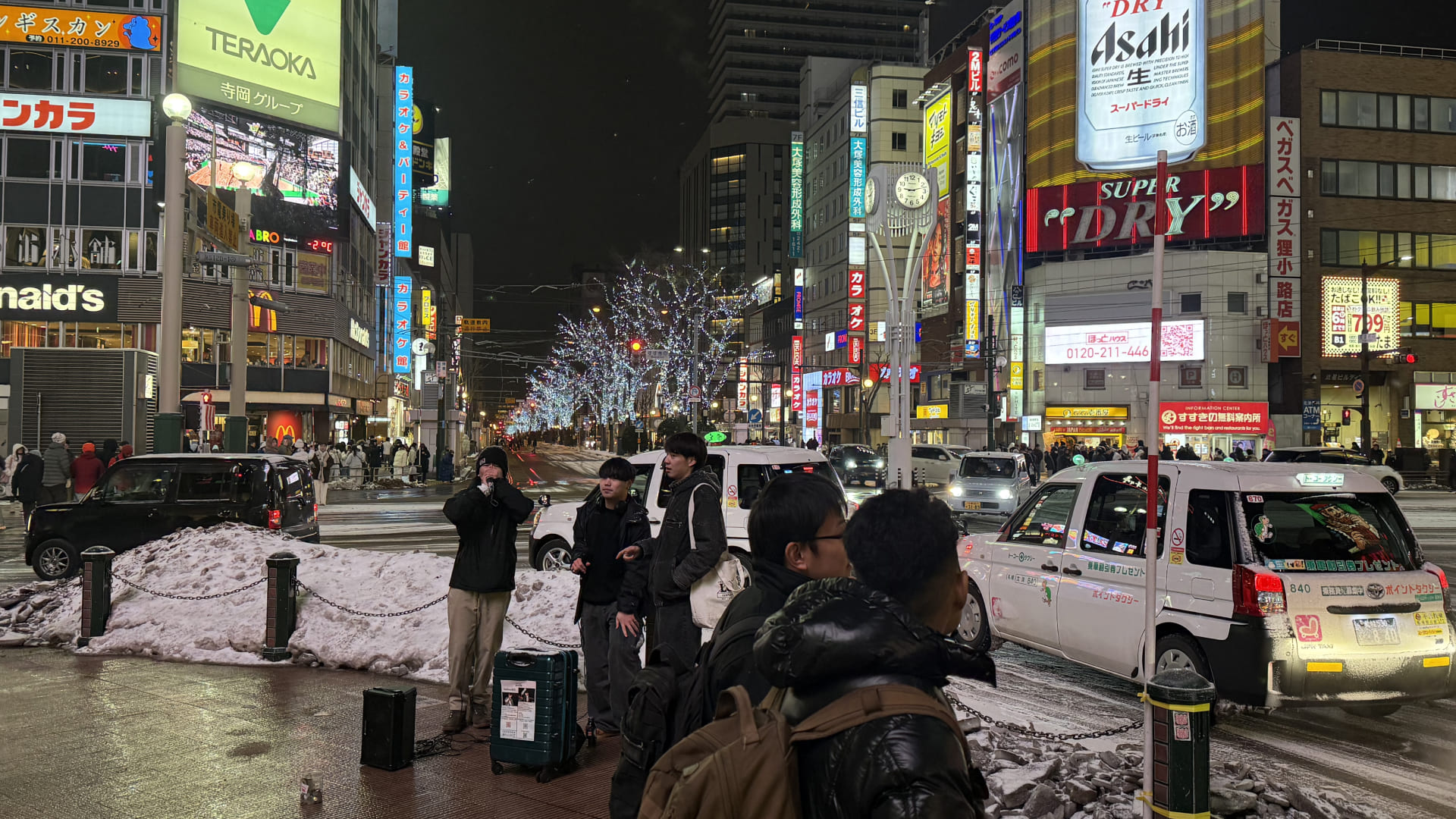
User Research
93 survey responses and 5 in-depth group interviews distilled five recurring pain-points in group travel:
- Route-planning conflict — opinions diverge early and are hard to merge.
- High real-time comms cost — key info is buried across chat apps.
- Complex on-the-fly changes — re-booking tickets, maps, and schedules is tedious.
- Preference clashes — walking distance, diets, budgets spark friction.
- Info mis-alignment — not everyone gets the latest meet-up or route change.
Lumi is designed to tackle these five issues with real-time decision brokering, synced information, and dramatically lower communication burden.
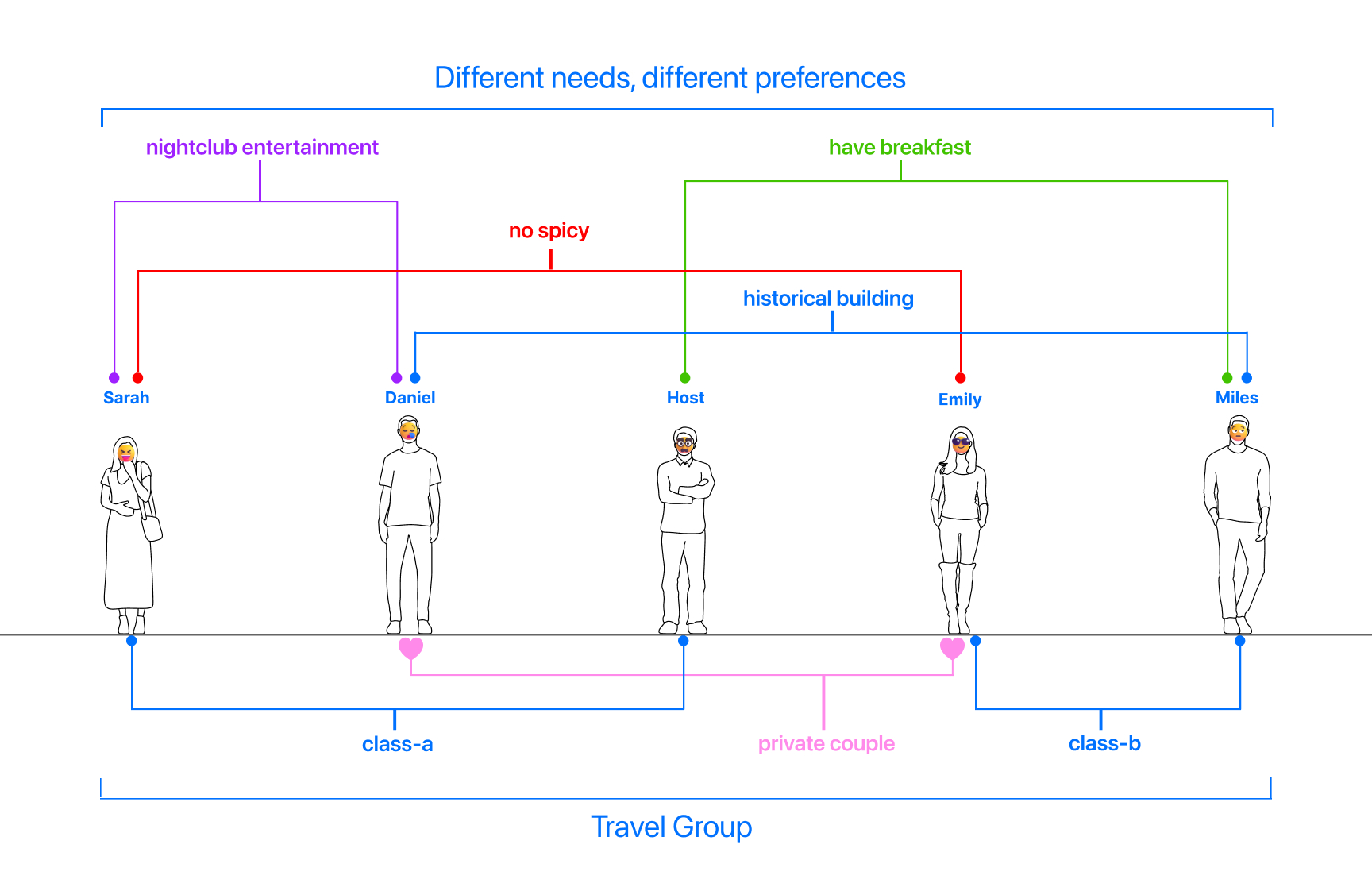
- Different backgrounds
- Different habits
- Conflicts and disagreements

Anachronistic Brainstorming
Travel is ultimately about relaxation and self-expression—each member wants to explore at their own rhythm. When strong self-interests collide without a consensus-building mechanism, minor differences balloon into frustration.
A great tour guide’s hidden super-power is to form a “temporary consensus” and keep mediating along the way—introducing a baseline everyone can accept, then converging opinions whenever new conflicts emerge, so the group pace stays smooth and pleasant.
Product Design
Core Functions
-
Communication Management
Lumi uses quick polls + AI suggestions to craft compromises the moment opinions diverge, then auto-pushes meet-ups, late-comer nudges, and re-routing—consensus with minimum chatter. -
Proactive Service
Using live location, weather, and queue times, Lumi reshuffles the schedule, offers fallback routes, and chains hotel check-in or ticket scans into one-tap workflows—off-loading decisions and app-hopping to AI. -
Information Sharing
Meet-up times, traffic updates, and personal routes are broadcast in one unified feed + multi-user map; every edit is versioned, so the team always sees one latest, single source of truth.
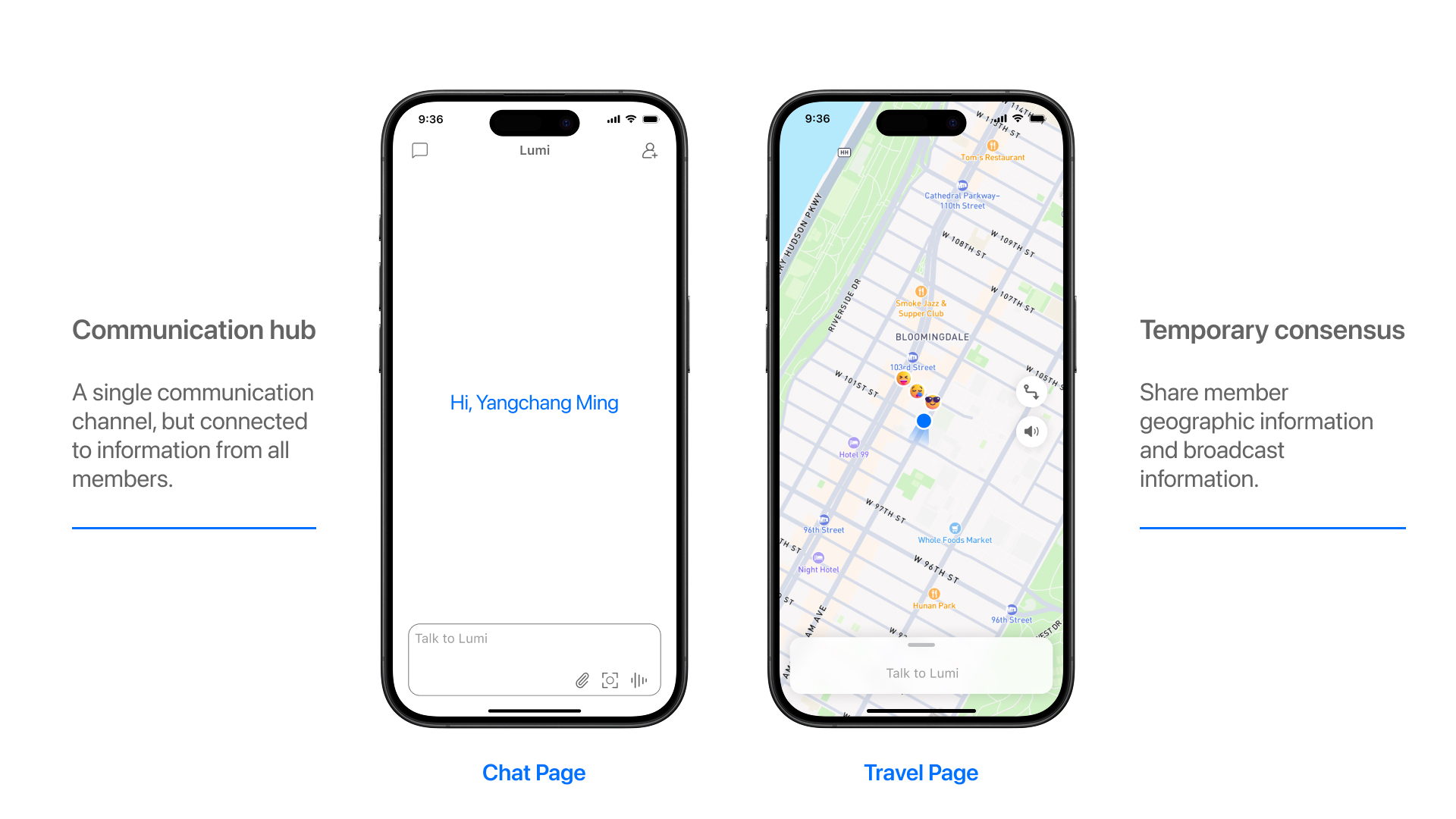
Communication Management
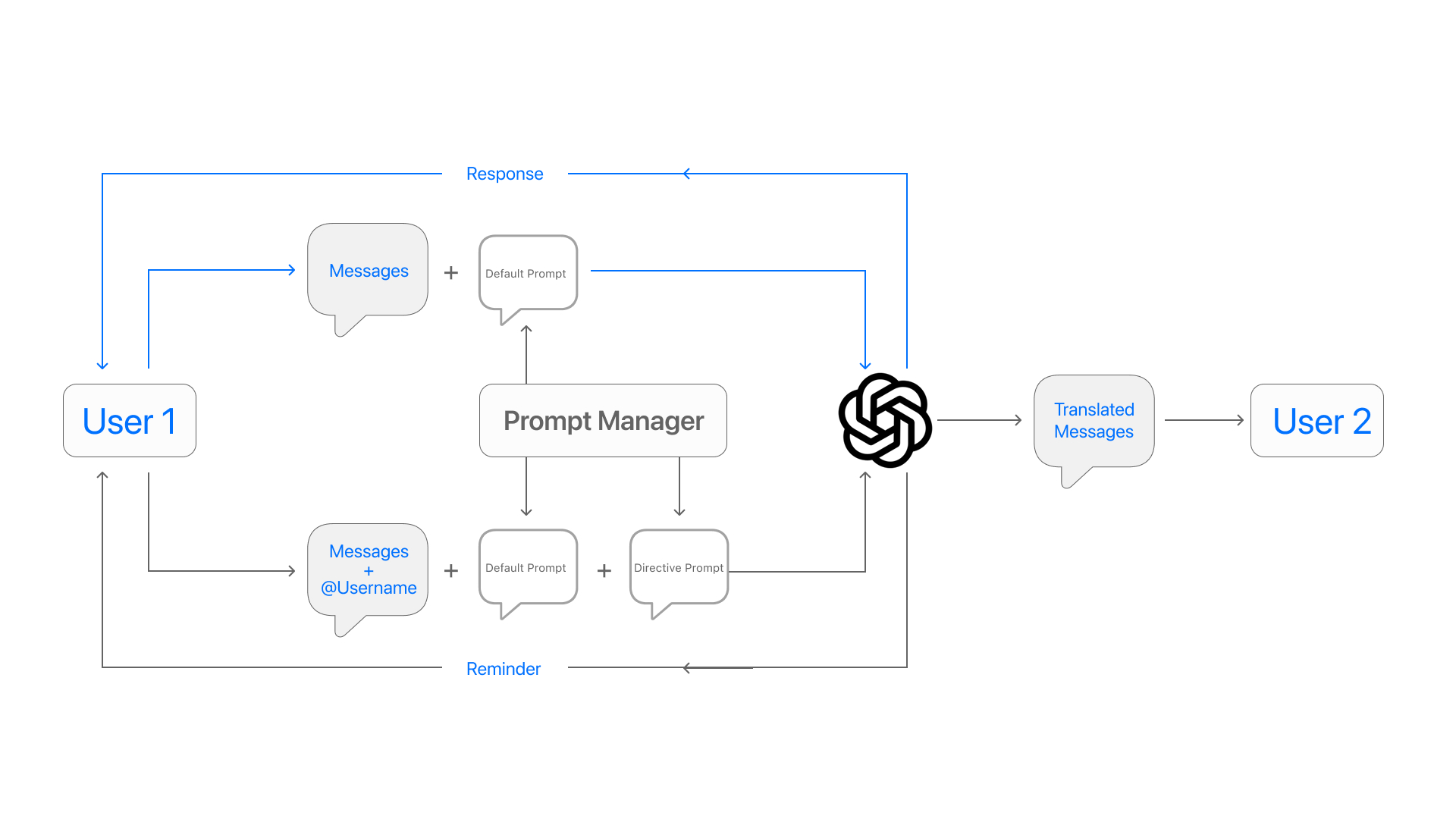
-
Private assistant chat. A member can DM Lumi for routes, transfers, or dining tips. The message hits the Prompt Manager, is merged with system guide prompts, sent to the LLM, and the reply returns as Lumi’s voice—personal guidance without spamming the team.
-
Broadcast via Lumi. Need to alert teammates? Just type “@Lumi tell…”. The original text + directive template goes to the LLM, which produces a formatted, translated notice in Lumi’s tone. Lumi then broadcasts it; receivers see the message from the guide, keeping language and tone consistent and reducing miscommunication.
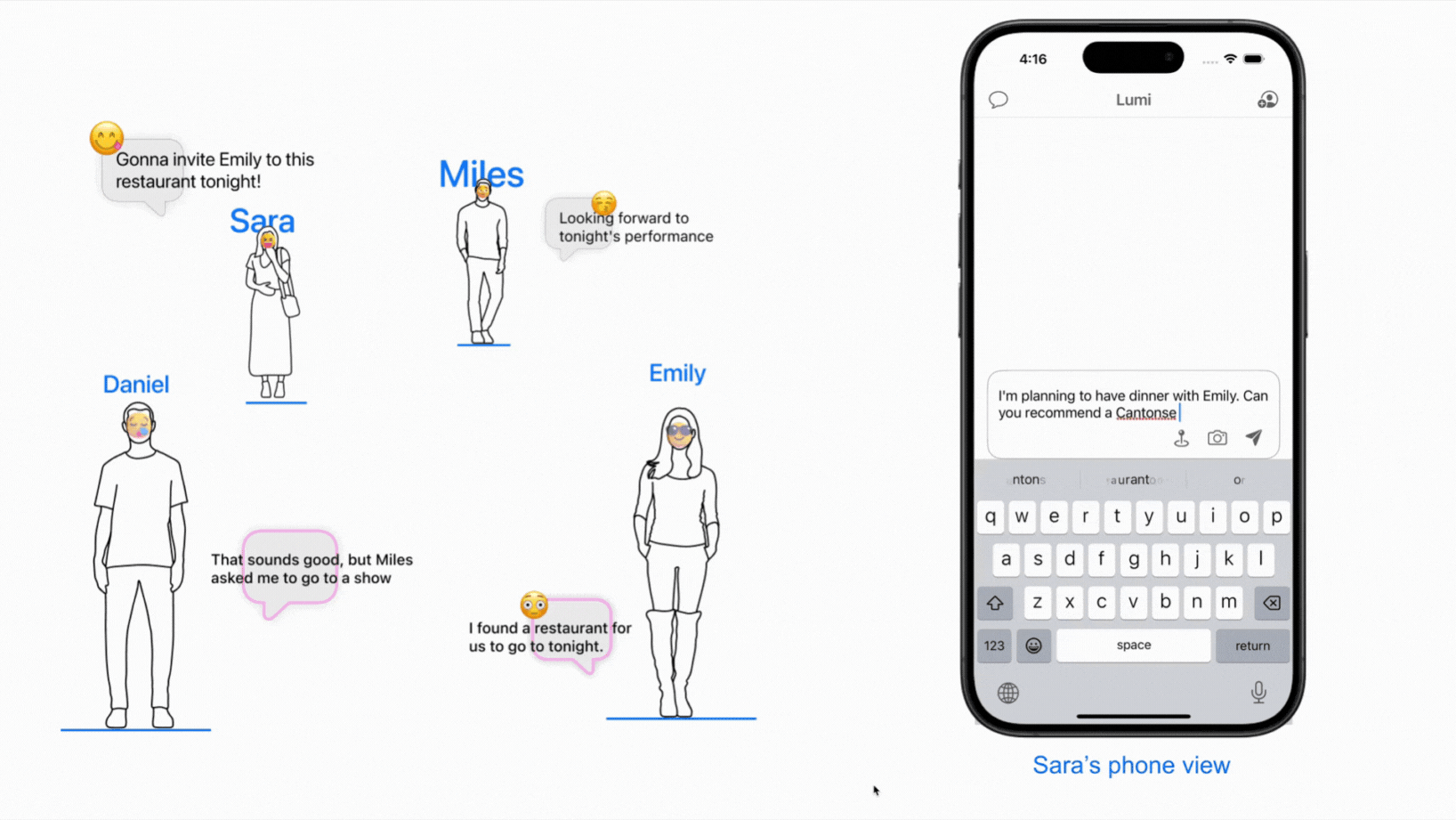
Information Sharing
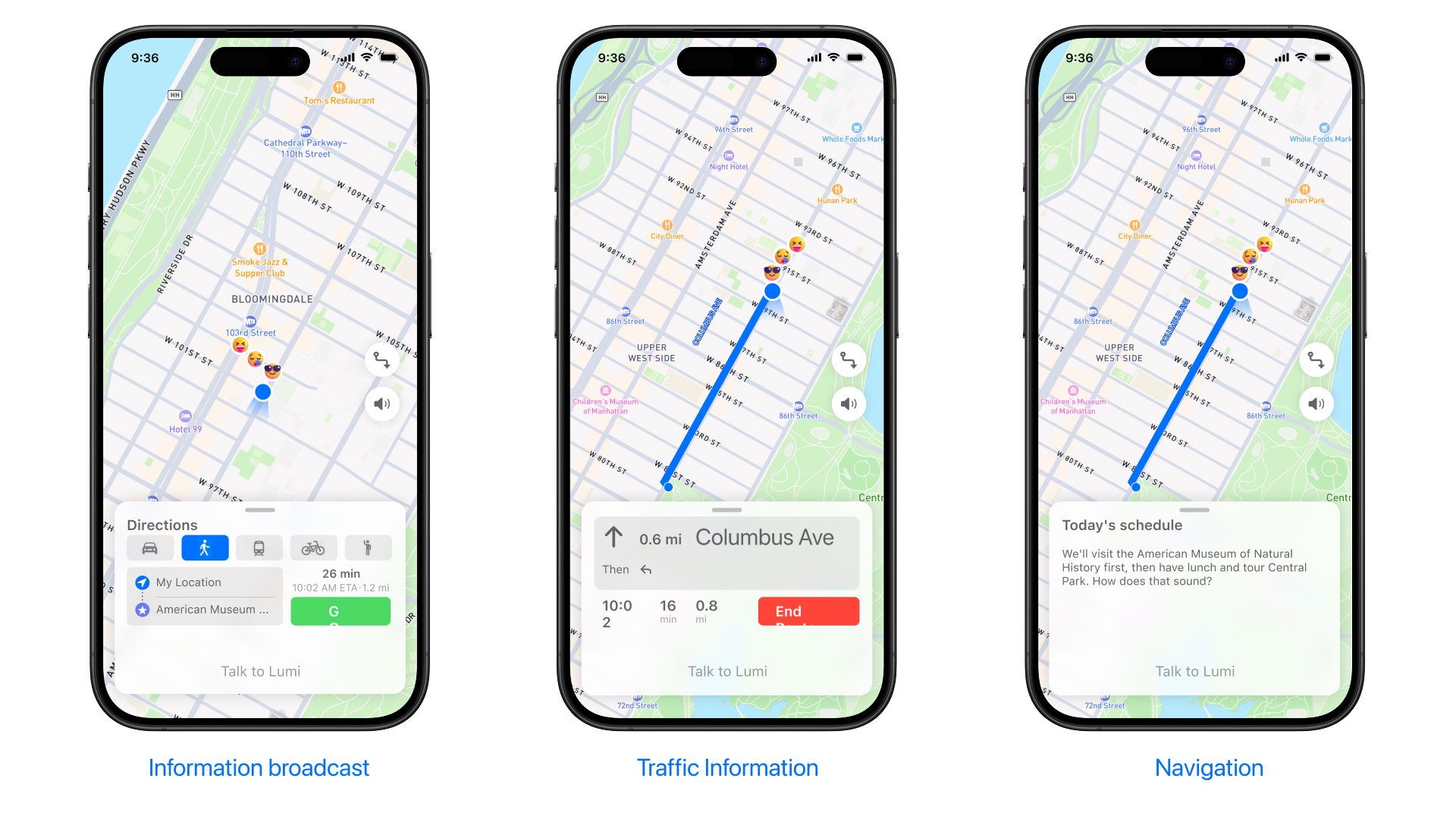
On the Travel Page, Lumi merges team locations and agenda into one shared map with three live cards: Information Broadcast pushes pop-ups at breakfast, meet-ups, etc., showing who’s where and ETA; Traffic Information updates routes and times when congestion hits; Navigation & Schedule summarises the next stop in natural language and gathers feedback, then optimises the plan for everyone. This layered flow keeps the whole group in sync and slashes coordination overhead.
Proactive Service — LLM × GIS
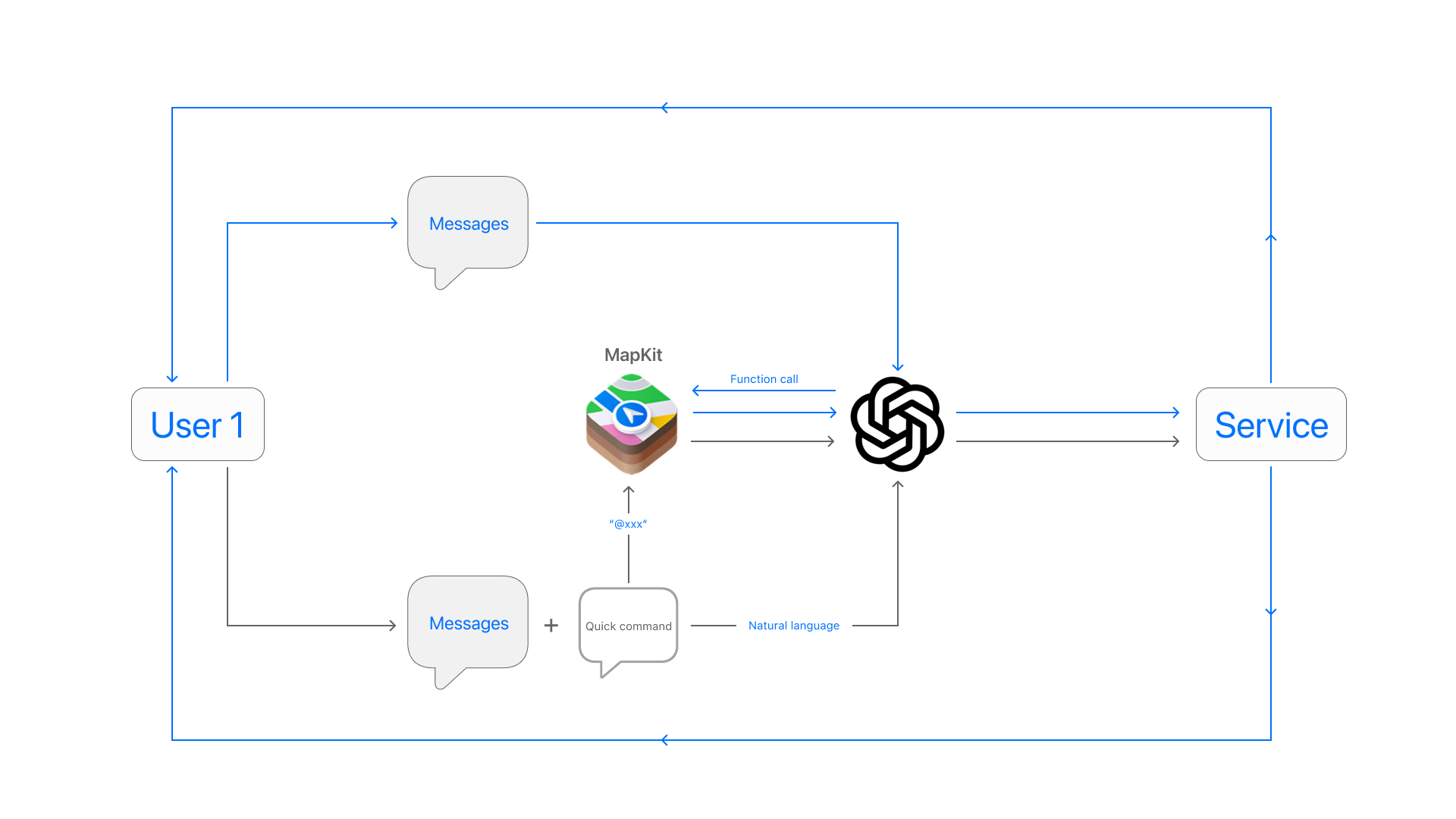
How Lumi’s GIS Pipeline Works
Lumi weaves three layers — GPT‑4o, Apple MapKit, and iOS Shortcuts — into a seamless loop:
-
Understand →
A user asks in natural language, e.g.
“How long is the walk from Columbia to MoMA?” -
Plan →
The request is wrapped in a four‑part prompt (system rules · context · tool schema · user text).
The tool schema advertises JSON functions such asfindRoute(destination, mode). -
Execute →
GPT‑4o returns a function call:{ "name": "findRoute", "arguments": { "destination": "MoMA", "mode": "walking" } }The Router hands this to MapManager, which
- queries MapKit for ETA and polyline,
- grabs a static map snapshot, then
- returns the data to GPT‑4o.
If MapKit fails, Lumi falls back to text‑only directions while logging the error.
-
Feedback →
GPT‑4o turns the data into a human‑readable card.
When the user taps Navigate, Lumi writes the same coordinates into an App Intent, jumping straight to Apple Maps or CarPlay.
A later voice command (“Navigate to MoMA”) reuses the cached intent, bypassing the LLM entirely.
Decoupling the streams (language ↔ geometry ↔ OS actions) and binding them with a single JSON schema keeps Lumi’s GIS stack lightweight, extensible, and fast.
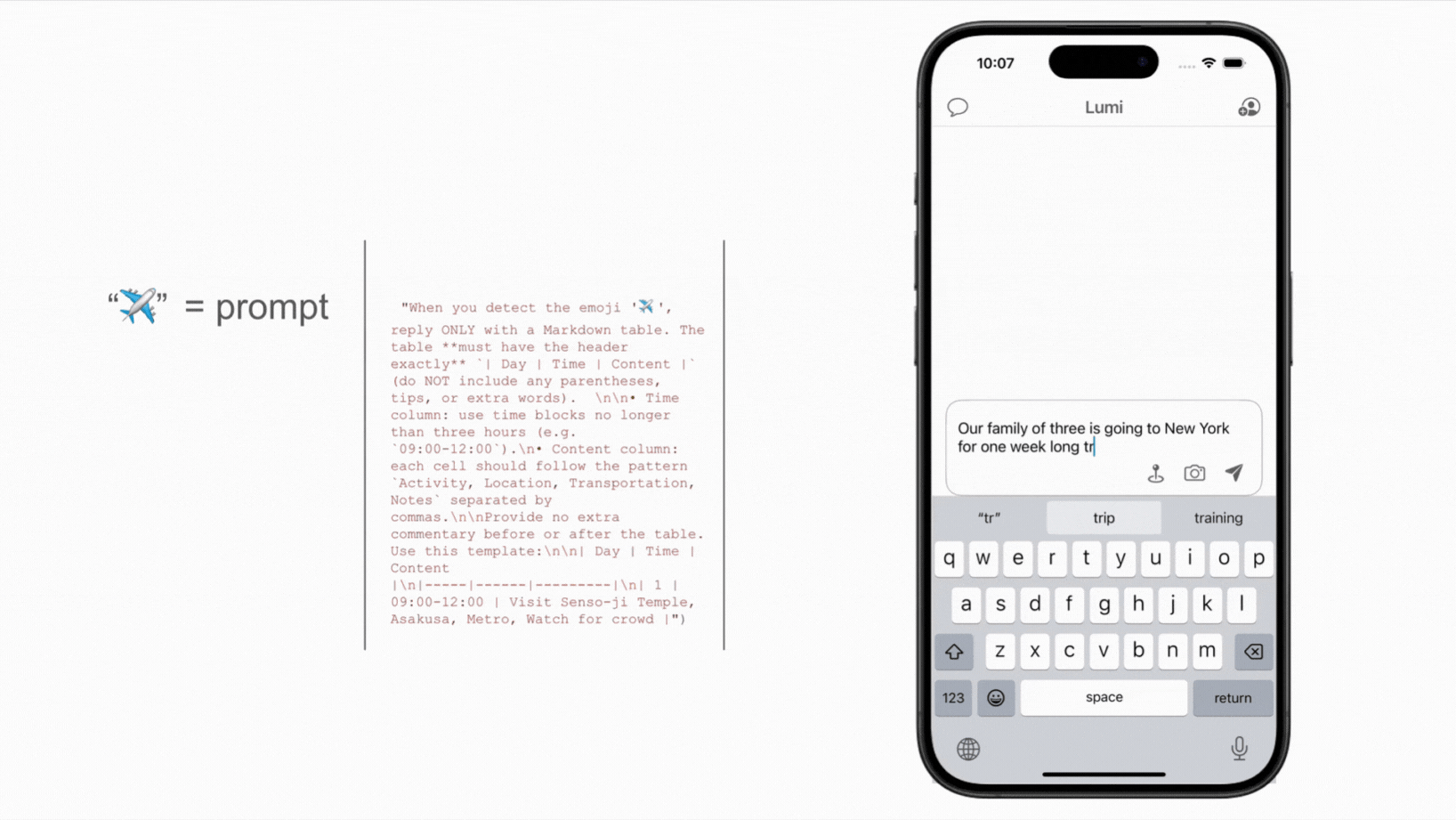
- Scenario 1: Lumi builds a week-long itinerary table from live map data.

- Scenario 2: Lumi quickly filters quality breakfast hotels near the destination.
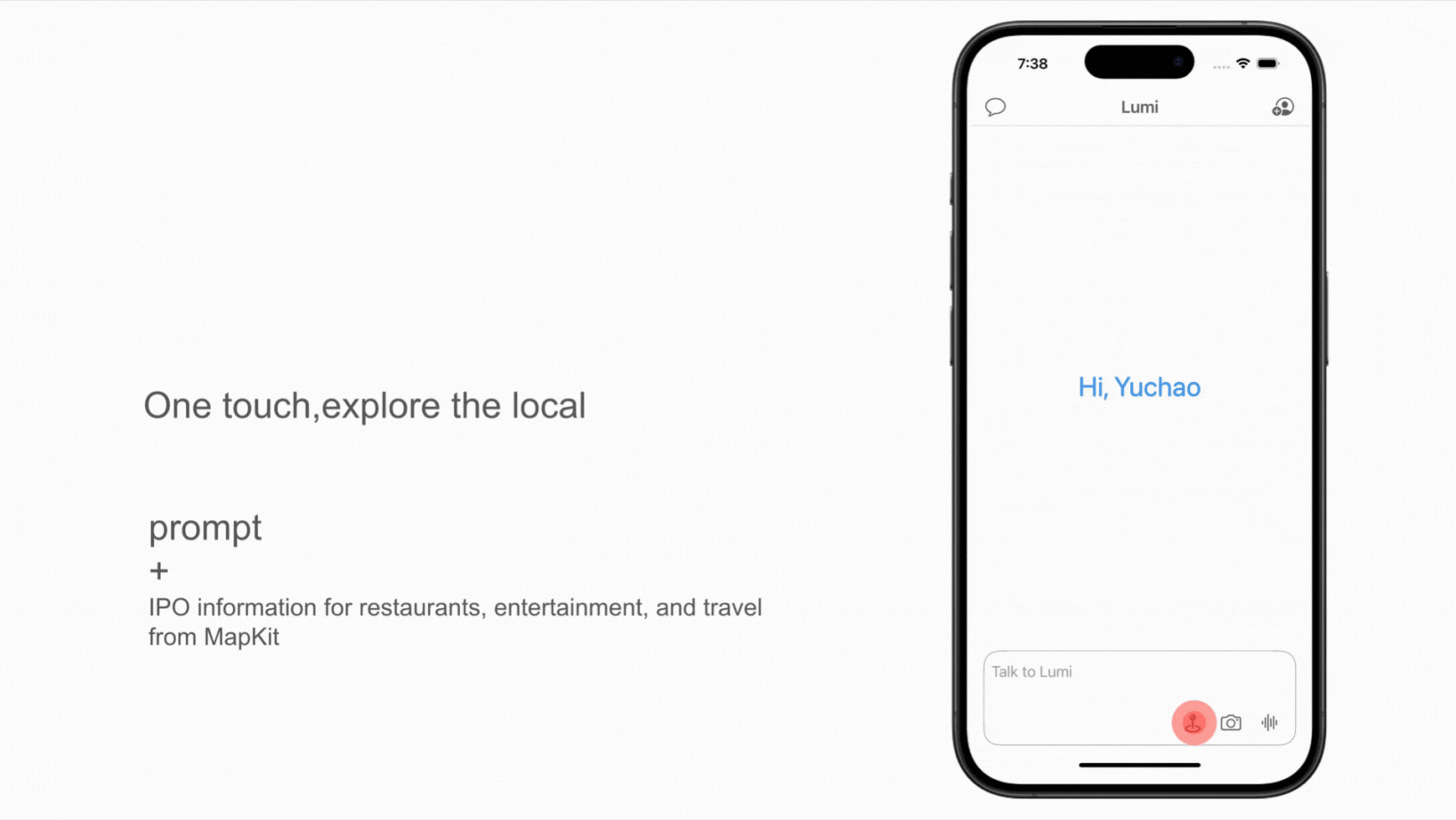
- Scenario 3: Lumi generates a 3-hour city stroll plan within 3 km of the current location.